Last updated on April 5, 2024
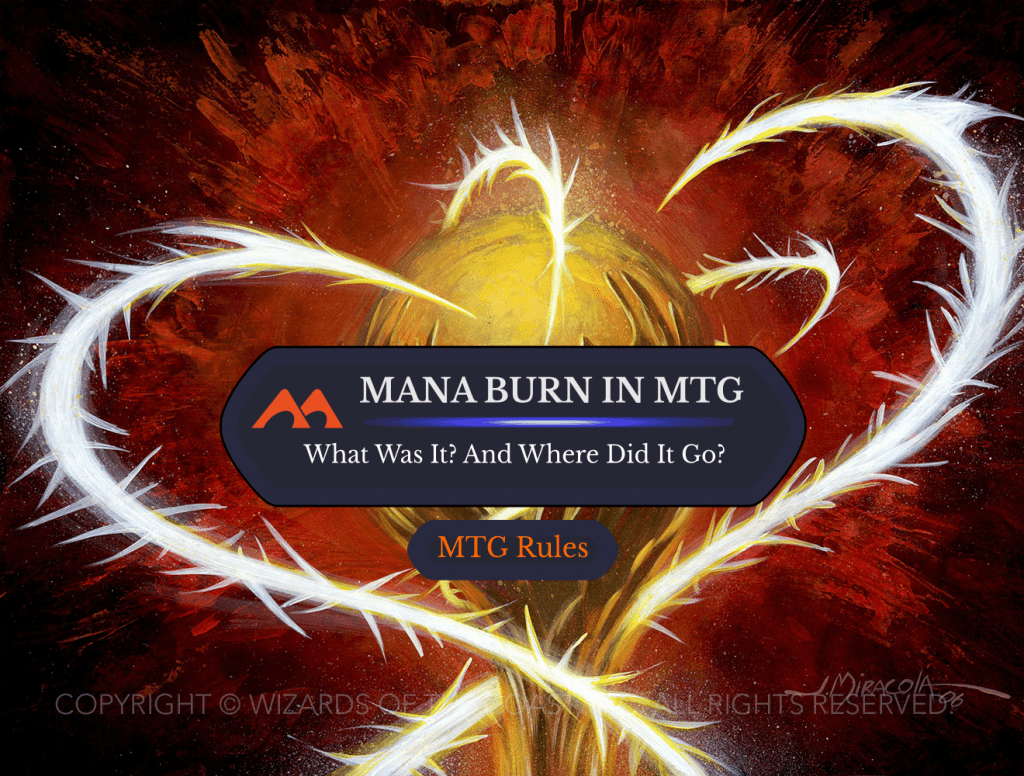
Manabarbs | Illustration by Jeff Miracola
I started playing Magic back in 2012 after a friend of mine got me hooked on it. Even though mana burn had been rendered obsolete three years before that, people were still talking about it. Some with verve, others with disgust, and yet again others with comedic flair.
Naturally, I was intrigued. What was this “mana burn”? I turned to my brother, who had started playing MTG during Urza block, and he was able to fill me in on this interesting rule. And now, more than a decade after the fact, you’ll be able to read all about it, too! If that isn’t a slow burn, I don’t know what is.
What Was Mana Burn?
If there was any mana left in your mana pool as a phase ended, you would lose one point of life for each mana that remained unused. The official rules explained it as follows:
300. General (Obsolete)
300.3. When a phase ends (but not a step), any unused mana left in a player's mana pool is lost. That player loses 1 life for each one mana lost this way. This is called mana burn. Mana burn is loss of life, not damage, so it can't be prevented or altered by effects that affect damage. This game action doesn't use the stack. (See rule 406, “Mana Abilities.”)
For example, let’s say that you had two mana left floating from casting Spatial Contortion, paid with Temple of the False God and Golgari Rot Farm during your first main phase. Before you move to your combat phase, you lose two life for the unspent mana.
In the example I used lands, but keep in mind that mana burn applies for any mana left. This included mana from spells like Cabal Ritual, mana rocks like Sol Ring, and enchantments like Mana Echoes.
Now that you’ve wrapped your head around what mana burn is, let’s delve into its history.
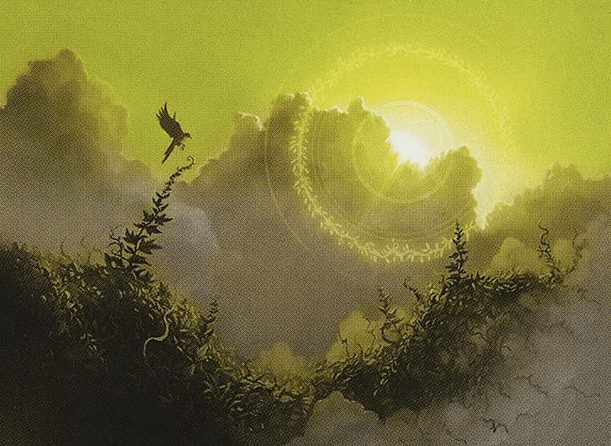
Upwelling | Illustration by Chippy
The History of Mana Burn
Like regeneration, reserved list, and damage on the stack, mana burn is now an outdated thing. Something that’s been rendered unnecessary in the current landscape of MTG. Yet, it’s still an interesting rule to delve into. Why it was around and where did it come from? Let’s find out.
Introduction
Mana burn was introduced in Magic at its conception. This means you have to go back all the way to 1993’s August release of Limited Edition Alpha, the very first MTG set.
In Alpha’s official rule book, mana burn is mentioned here:
You lose all of the mana in your mana pool if you do not use it before a phase ends. The mana pool is also cleared when an attack begins and when an attack ends. You lose a life point for each mana lost in this manner. However, you cannot be deprived of a chance to use the mana in your pool. If a card provides more than one mana, you must draw the full amount into your pool when you use it.
WotC
For over two decades, mana burn would be there to punish mana-hoarding players, all the way up to the release of Magic 2010 in July of 2009.

Hoarder's Greed | Illustration by Pete Venters
Flavor
Mana burn wasn’t just a part of the rules, it was also part of the actual flavor of MTG. In the lore, it’s said that when magic started to spread over the continent of Dominaria during the Dark Age, the Church of Tal persecuted its wielders.
Because of this, mages couldn’t (or didn’t) exchange info about the repercussions of using too much mana, which could result in the phenomenon known as mana burn. If a mage did this too often, they could be turned into a near brainless monster. The mages who fell to this terrible fate were collectively known as “The Fallen.”
This gives you some insight into why it was part of the game, right from the start. The whole idea of magic is that you, as a player, are a mage known as a planeswalker who takes part in casting spells and defeating enemies like any other wizard in the game. So, it’s only logical that you would sustain the same type of injuries that those wizards are susceptible to. Hence mana burn became a part of the rules of MTG.
Rule Changes
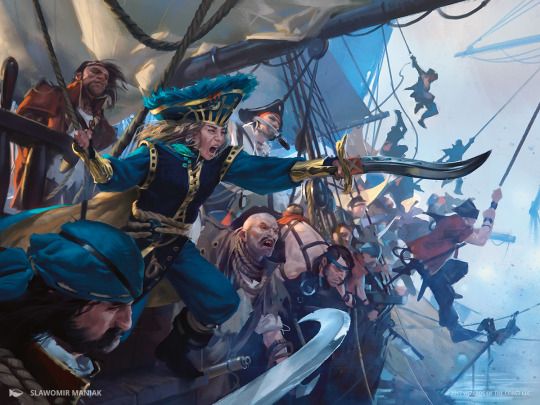
Admiral's Order | Illustration by Slawomir Maniak
Over the years, the rule got a few tweaks and alterations. It always stayed the same, meaning that mana burn would always result in the player losing one life for each mana left in their pool. The changes have been in when this would happen.
The creator of MTG, Richard Garfield, has said that mana burn would only happen at the end of a player’s turn in its very early stages. During this time, mana wouldn’t empty from said player’s mana pool as he or she moved through steps and phases. Only at the end of their turn would mana burn would kick in.
When Alpha was released in 1993, they changed this rule to “the end of every phase.” This meant that mana would empty, and so mana burn would happen, in five places during a turn. At the end of your:
- Beginning phase
- First main phase
- Combat phase
- Second main phase
- End phase
The reason for this change was because a player could, in theory, float all their mana after their untap step and then just go through their turn. This caused a lot of confusion as to how much mana this player had left at any given point.
With the change, you benefited greatly from not tapping all of your mana right away, because it would be gone if you didn’t spend it in the current phase. This made the “how much mana do you have” issue much less confusing.
Why Was Mana Burn Retired?

Heartbeat of Spring | Illustration by Rob Alexander
It all finally came to an end right before the release of Magic 2010.
This was done because players, and especially new players, didn’t pay attention to mana burn. When they did learn that it was a thing, it only brought about a lot of confusion. As of July 17, 2009, mana burn was officially scrapped from the MTG rules book.
The game is already very complicated to wrap your head around for new and old players alike. Wizards reasoned that it’s already difficult for new players to make a clear distinction when phases of a turn end and that mana burn unnecessarily complicated matters. They also deducted that the upside of mana burn and its impact on a game was minimal at best.
Mana at the End of Each Phase and Step
This is why on June 10, 2009, WotC put out an extensive article in which various rule changes were implemented, including the removal of mana burn. Instead, mana would empty at the end of each phase and step sans damage. This means that mana empties from your pool at the end of:
- Beginning phase
- Untap step
- Upkeep step
- Draw step
- First main phase
- Combat phase
- Beginning of combat step
- Declare attackers step
- Declare blockers step
- Damage step
- End of combat step
- Second main phase
- End phase
- End step
- Cleanup step
MaRo's Reasons
As Mark Rosewater himself has stated, change is not only inevitable, it’s a good thing. As hard as he himself had fought a decade before the Magic 2010 rules change to keep mana burn in, he was the biggest supporter of the removal of the rule for the release of the July 17, 2009 set. His reasons were simple yet effective ones:
- It would significantly free up design space
- It removed complications for beginning players
- The rule wasn’t carrying its weight
And that’s the end-all and be-all of why mana burn is now a thing of the past in MTG. This brings us to the present day of a mana-burn-free world. Of course, there is an option open to you: add the rule back in at your kitchen table for fun and see what happens.
Add Mana Burn in Rule 0
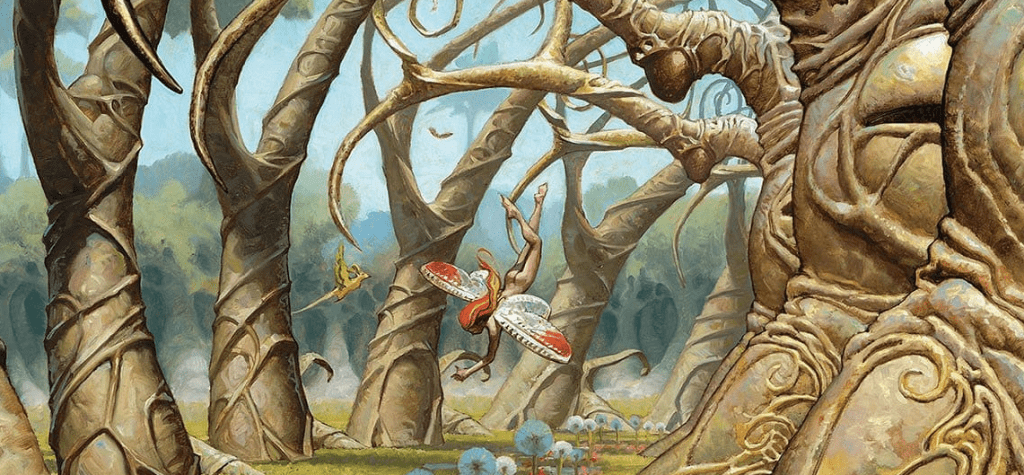
Gaea's Cradle | Illustration by Mark Zug
Before mana burn was ousted as a rule, there were already a number of cards that gave you the opportunity to produce a lot of mana. A ton of new cards have since been printed that do even more of that. So why not experiment with mana burn at your kitchen table?
It’s common knowledge that mana is the key to doing all things great in MTG. There’s always that one friend in every playgroup who is dead set on producing as much of it as possible before exploding and doing the most obscene things with it. This probably coincides with cards that help with floating mana through phases and steps, like Upwelling, Omnath, Locus of Mana, or Grand Warlord Radha.
To help keep those players in check you might suggest the reinstatement of the mana burn rule with a rule 0 discussion. That way, you and your friends can find out for yourself if you like the rule or if it complicates things. You can always adjust it a little bit if need be. For instance, by following the modern-day rules of when mana empties from pools instead of the ones that were around when mana burn was still active.
Are There Any Cards That Restore Mana Burn?
The Commander Legends viashino shaman, Yurlok of Scorch Thrash is the best card for reinstating mana burn, and a unique Jund () commander at that. Manabarbs is quite different than mana burn but does punish players that over-produce mana.
Wrap Up
As you can see, there are a variety of things you can do and try when you want to use mana burn. I suggest you tinker with it and, most importantly, have fun!
With those words, I’ve burnt out everything you need to know about mana burn. As always, feel free to head on over to the blog if you want to read more awesome articles. If you like our content and want to show your support, you can head on over to our Patreon site. We greatly appreciate your support.
That’s all for now. Remember to put on sunscreen to avoid sunburns, and I’ll see you in the next one!
Follow Draftsim for awesome articles and set updates: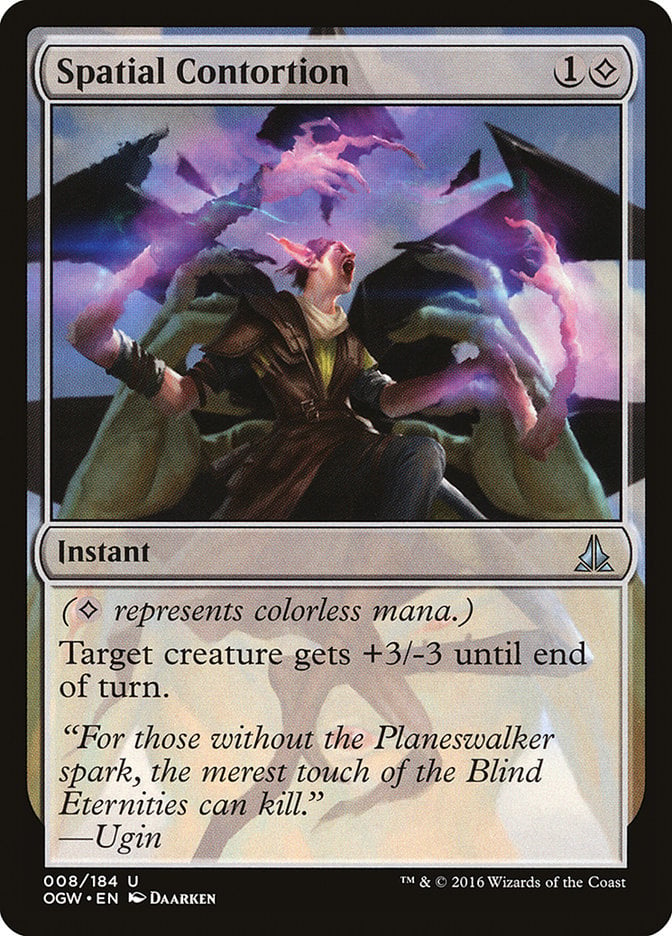

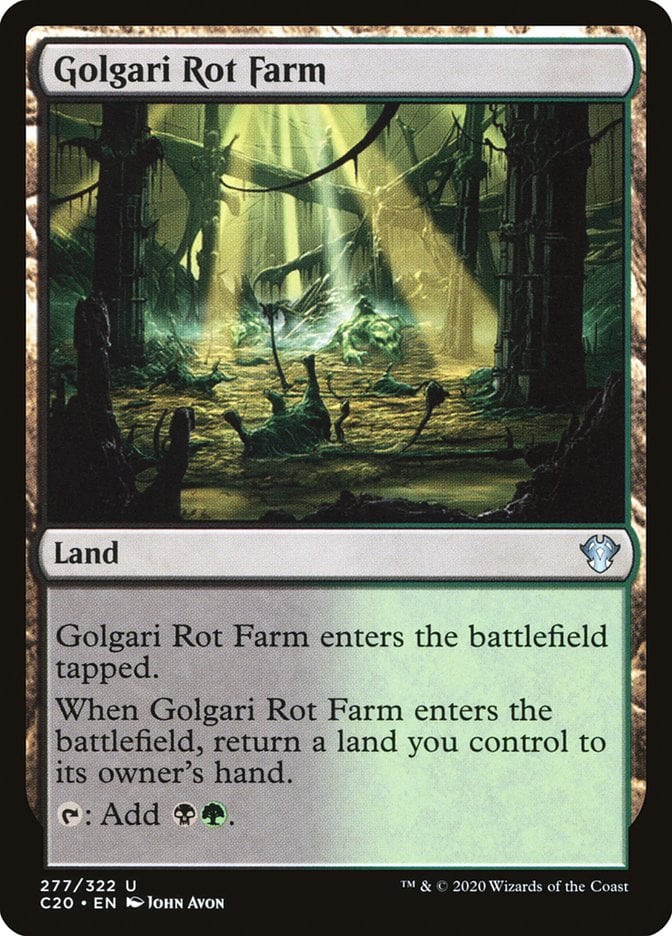
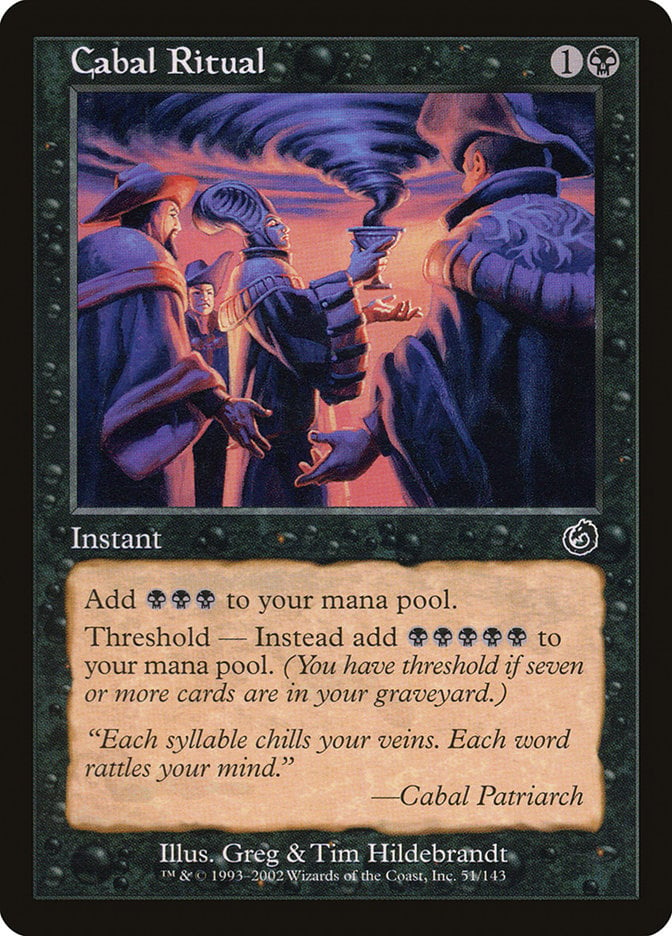

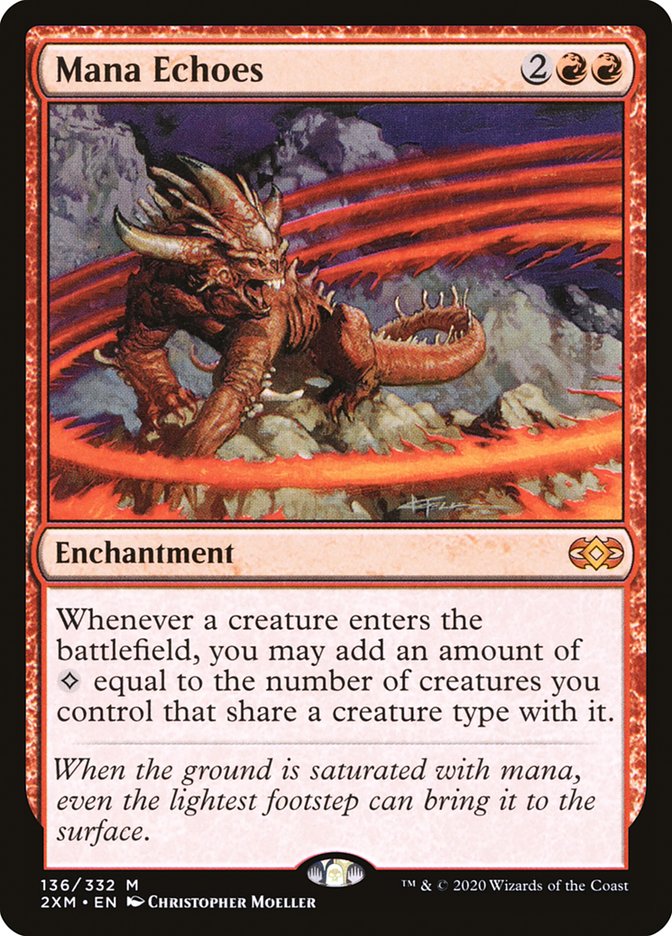
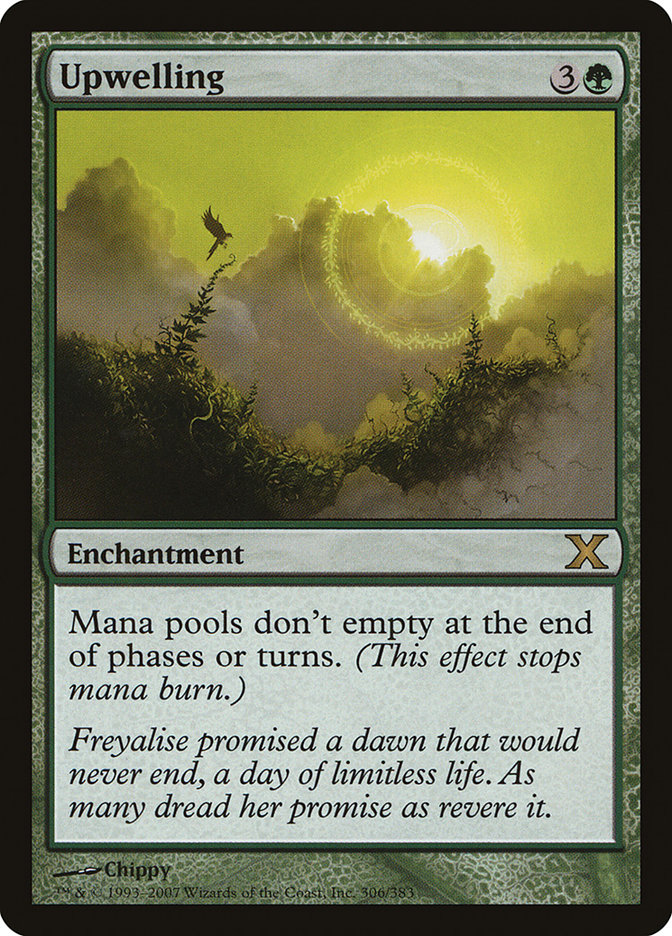
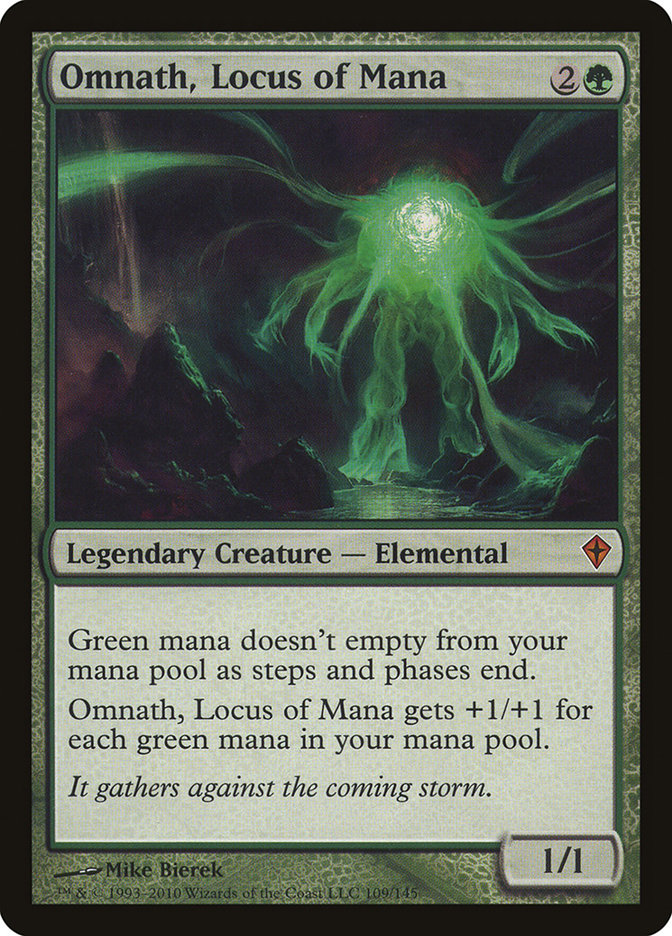
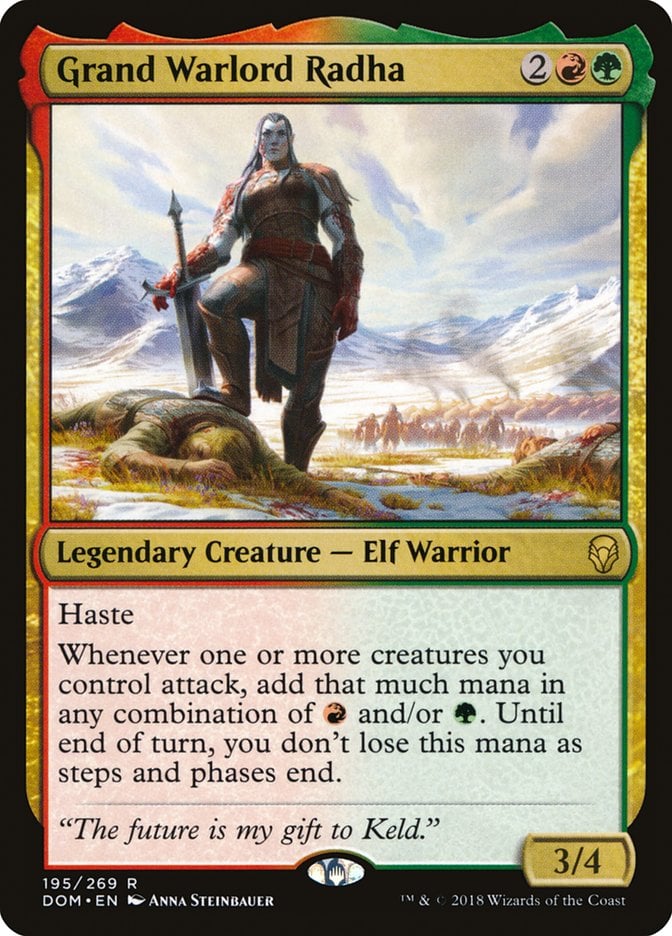
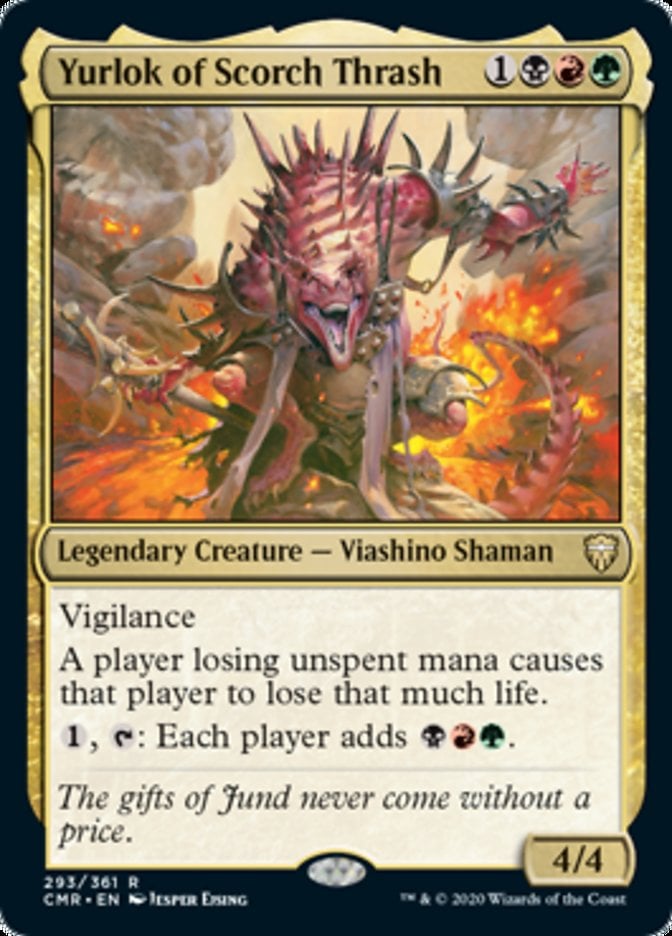

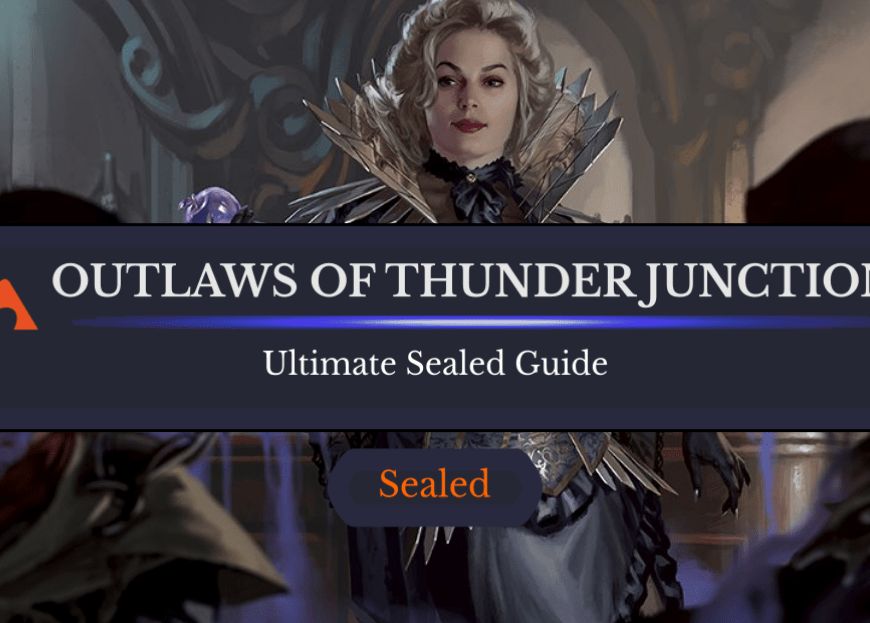

2 Comments
This is an interesting article. Although now I have an extra set of questions. A friend originally gave me a rules booklet from a Beta starter deck to learn from. When I finally got to play, I found there were several changes to the rules. Mana burn rules seemed to have been one of the changes.
When I started playing I was using the “mana burn only happens at the end of the turn” rule. Most of the time you didn’t float all your mana at the start of the turn because it was a headache to keep track of. But you didn’t have to worry about an extra mana from an enchanted land vanishing on you. It was still there for your combat or second main phase.
Strangely enough, when I started playing, I believed there was another aspect of the Mana Burn rule not mentioned here. (I assume I got this from the rule booklet, but I can not check now.) That other aspect was that if you got mana burned, the mana didn’t drain from your mana pool. Instead it became colorless. So if you found yourself getting land screwed, you had the option to try and build up some mana by taking Mana Burn on a turn.
Maybe I am suffering from some sort of Mandela effect. All I really know is that the rules have changed since I first picked up that rule booklet.
Never heard of the second part. I started around unlimited/revised and we all played with the end of turn rule. I had not heard of the phases thing until I picked up arena last month (and also didn’t know burn was out, lol).
Add Comment